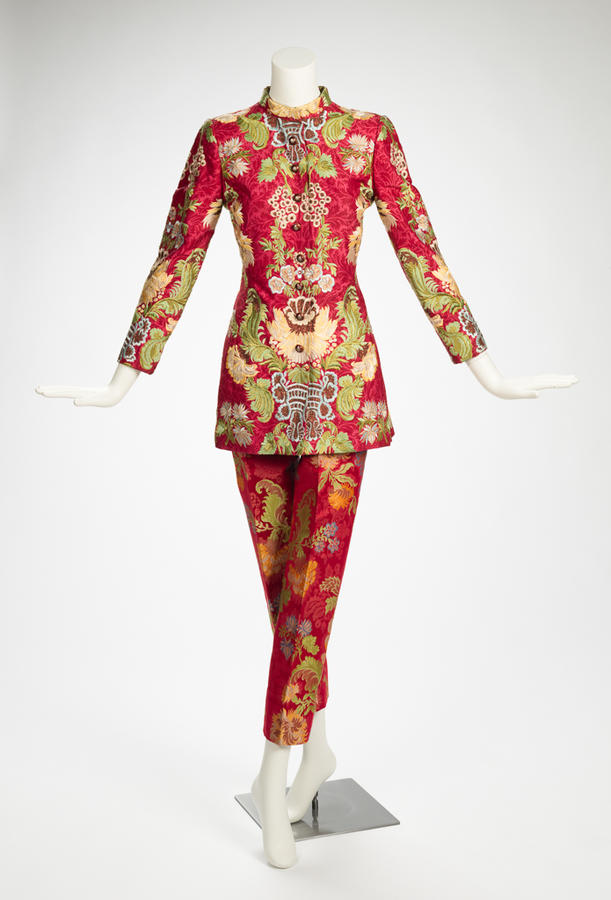1. Overview
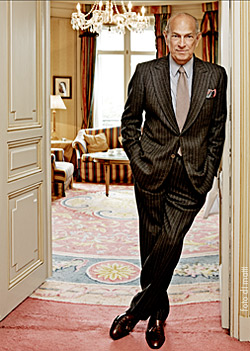
Óscar Arístides Renta Fiallo, professionally known as Oscar de la Renta, was a prominent Dominican-American fashion designer whose career spanned over five decades. Born in Santo Domingo, Dominican Republic, he rose to international fame in the 1960s, notably as a couturier who dressed Jacqueline Kennedy Onassis. Trained by legendary designers Cristóbal Balenciaga and Antonio del Castillo, de la Renta established his eponymous fashion house, which became globally recognized for its elegant women's wear, dressing everyone from film stars to royalty. Beyond his significant contributions to haute couture and ready-to-wear, he expanded his brand into fragrances, accessories, and homewares. De la Renta was also a dedicated philanthropist, founding an orphanage in his home country and actively supporting various charitable causes, embodying his role as an unofficial ambassador for the Dominican Republic. His enduring legacy is marked by numerous awards and a distinctive design aesthetic that blended European sophistication with Latin American vibrancy.
2. Early life and background
Oscar de la Renta's formative years were shaped by his family's prominent social standing in the Dominican Republic and his early exposure to the arts, which laid the foundation for his illustrious career in fashion.
2.1. Birth and family background
Óscar Arístides Renta Fiallo was born on July 22, 1932, in Santo Domingo, Dominican Republic. He was the youngest of seven children and the only boy in his family. His mother was Carmen María Antonia Fiallo, a Dominican woman whose family, the Fiallos, had deep roots in Dominican society, counting poets, scholars, businessmen, and high-ranking military officers among their members. Their lineage on the island can be traced back to the 1685 foundation of San Carlos de Tenerife by Canarian settlers. His father, Óscar Avelino De La Renta, was a Puerto Rican who owned an insurance company. De la Renta was raised in a protective Catholic family. Tragically, his mother died from complications of multiple sclerosis when he was 18 years old.
His family included notable figures such as his maternal uncle, Luis Arístides Fiallo Cabral, a polymath who was a doctor, lawyer, and architect, holding every degree offered by the University of Santo Domingo. Another maternal uncle, Fabio Fiallo, was a distinguished diplomat and poet. On his father's side, his great-great-grandfather, José Ortíz de la Renta, holds the distinction of being the first mayor of Ponce, Puerto Rico, elected by popular vote, and served an unprecedented eight terms.
2.2. Education and early career
At the age of 18, de la Renta moved to Madrid, Spain, to study painting at the Royal Academy of San Fernando. To earn extra money, he began sketching clothes for local newspapers and fashion houses. His talent caught the attention of Francesca Lodge, the wife of John Davis Lodge, then the United States Ambassador to Spain. She commissioned de la Renta to design a gown for her daughter, a dress that subsequently appeared on the cover of Life magazine that autumn.
This pivotal experience ignited his interest in fashion design, leading him to sketch for leading Spanish fashion houses. He soon secured an apprenticeship with Spain's most renowned couturier, Cristóbal Balenciaga, whom he deeply admired and considered his mentor. In 1961, de la Renta left Spain for Paris, where he joined Antonio del Castillo as a couture assistant at the fashion house of Lanvin. Castillo would later become an Academy Award-winning costume designer in 1971.
3. Career
Oscar de la Renta's career trajectory saw him transition from European couture houses to establishing a globally recognized brand in New York, marked by his distinctive style and strategic business expansion.
3.1. Early career in Paris
After his apprenticeship with Cristóbal Balenciaga, de la Renta moved to Paris in 1961. There, he worked as a couture assistant for Antonio del Castillo at the prestigious French fashion house Lanvin. This period provided him with invaluable experience in the intricate world of high fashion and laid the groundwork for his future endeavors.
3.2. Work in New York and brand establishment
In 1963, seeking to enter the more lucrative ready-to-wear market, de la Renta consulted with Diana Vreeland, the influential editor-in-chief of Vogue. Vreeland advised him to join Elizabeth Arden, suggesting he would build his reputation faster there since Arden was not a designer herself and would promote him, unlike at a house like Dior where he might be overshadowed. De la Renta followed her advice, working for Arden for two years in New York City.
Following his tenure at Elizabeth Arden, he moved to the American fashion house of Jane Derby in 1965. When Derby passed away in August of the same year, de la Renta took over the label. Initially, he relaunched it under the name Oscar de la Renta for Jane Derby, but by 1966, he rebranded it solely as Oscar de la Renta, establishing his eponymous fashion house.
3.3. International recognition and signature style
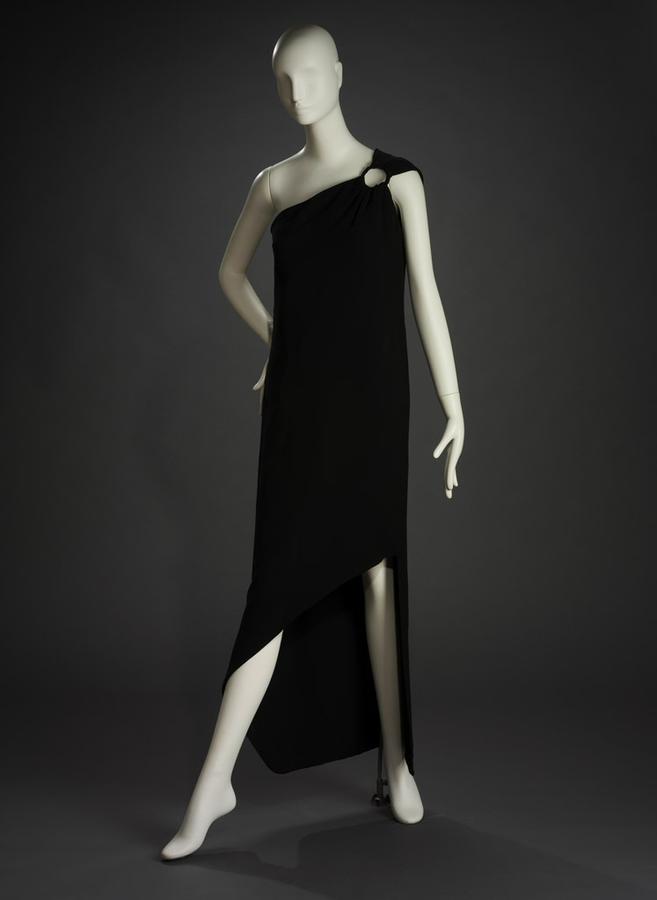
De la Renta quickly gained international recognition, particularly in the 1960s, as one of the leading couturiers who dressed Jacqueline Kennedy Onassis, the First Lady of the United States. His designs became synonymous with elegance and sophistication, attracting a diverse array of distinguished women and celebrities, including pop star Taylor Swift and members of royalty. His distinctive design aesthetic often featured vibrant colors, luxurious fabrics, intricate embroidery, and feminine silhouettes, blending European sophistication with Latin American influences.
3.4. Business expansion and diversification
The Oscar de la Renta brand strategically diversified its offerings beyond haute couture and ready-to-wear. In 1977, de la Renta launched his signature fragrance, OSCAR. This was followed by the introduction of an accessories line in 2001 and a homewares line in 2002, which included 100 home furnishings such as dining tables, upholstered chairs, and couches for Century Furniture. In 2004, he introduced a more accessible and less expensive clothing line called "O Oscar," aiming to attract new customers. Additionally, in 2006, de la Renta designed Tortuga Bay, a boutique hotel at the Puntacana Resort and Club in the Dominican Republic, which is part of The Leading Hotels of the World luxury collection.
3.5. Work for Balmain
From 1993 to 2002, Oscar de la Renta served as the haute couture designer for the renowned French fashion house Balmain. This appointment was a significant milestone, as he became the first Dominican to hold such a prestigious position at a French couture house, further solidifying his international standing in the fashion world.
3.6. Retail growth and brand management
Under the direction of CEO Alex Bolen, the Oscar de la Renta label experienced substantial international wholesale growth starting in 2003, expanding from five to seventy-five locations worldwide. De la Renta's designs are available through his own retail stores, online platforms, and a network of select wholesale partners across the globe, ensuring broad accessibility for his clientele.
3.7. Exhibitions and retrospectives
Oscar de la Renta's significant impact on fashion has been celebrated through various exhibitions and retrospectives. In 2014, the George W. Bush Presidential Center hosted a notable exhibit titled "Oscar de la Renta: Five Decades of Style." This exhibition showcased his iconic creations, particularly those designed for Mrs. Laura Bush and other First Ladies of the United States, highlighting his enduring influence on American political and social life.
4. Awards, honors, and philanthropic endeavors
Oscar de la Renta received numerous accolades throughout his career, recognizing his exceptional talent and contributions to the fashion industry. Beyond his professional achievements, he was deeply committed to various charitable causes and community development initiatives.
4.1. Major design awards
De la Renta was a recipient of the prestigious Coty Award, often referred to as the U.S. fashion industry's "Oscars," winning it in both 1967 and 1968. His consistent excellence led to his induction into the Coty Hall of Fame in 1973. He also received the American Fashion Critic's Award twice and was inducted into its Hall of Fame in 1973.
He held leadership positions within the CFDA, serving as its President from 1973 to 1976 and again from 1986 to 1988. His design prowess was continually recognized by the CFDA, earning him the Council of Fashion Designers Designer of the Year Award in 2000 and again in 2007 (tied with Proenza Schouler). In February 1990, the CFDA honored him with its highly esteemed Lifetime Achievement Award.
4.2. Other awards and honors
De la Renta's international recognition extended beyond design awards. He was inducted into the International Best Dressed List Hall of Fame in 1973. King Juan Carlos I of Spain bestowed upon him two significant Spanish honors: the Gold Medal of Bellas Artes and the La Gran Cruz de la Orden del Mérito Civil. The French government also recognized his contributions, honoring him with the Légion d'honneur as a Commandeur.
His home country, the Dominican Republic, honored him with its highest distinctions, including the Order of Merit of Duarte, Sánchez and Mella and the Order of Christopher Columbus. Further accolades include the Golden Plate Award of the American Academy of Achievement in 1991 and the Carnegie Hall Medal of Excellence in 2014. Posthumously, in 2017, the United States Postal Service honored him with an eleven-stamp series, featuring a black and white photograph of him alongside ten details from his iconic fashion designs. In May 2013, he also received an honorary degree from Hamilton College.
4.3. Philanthropic activities and contributions
Oscar de la Renta was a dedicated philanthropist, particularly committed to causes in the Dominican Republic. He founded the Casa del Niño orphanage in La Romana and significantly contributed to the construction of a much-needed school near his home at the Punta Cana Resort and Club in Punta Cana.
He actively supported cancer research, notably in February 2014, when he recreated his entire Spring presentation, the Designed for A Cure 2014 collection, to raise money for the Sylvester Comprehensive Cancer Center at the Miller School of Medicine at the University of Miami. De la Renta also served as a board member for several prominent cultural and charitable institutions, including the Metropolitan Opera, Carnegie Hall, and WNET. He was also involved with organizations such as New Yorkers for Children and the America's Society, and served as chairman of the Queen Sofía Spanish Institute.
5. Personal life
Oscar de la Renta's personal life was intertwined with his professional journey, marked by his marriages, family relationships, and deep connection to both his native Dominican Republic and the United States.
5.1. Marriages and family
In 1966, Oscar de la Renta married Françoise de Langlade (1921-1983), who was then the editor-in-chief of French Vogue and had previously worked for the fashion house of Elsa Schiaparelli. They remained married until her death from cancer in 1983. Following her passing, de la Renta adopted a boy from the Dominican Republic, whom he named Moisés.
In 1990, he married Annette Engelhard (born 1939). Annette was the daughter of Fritz Mannheimer and Jane Reiss, and the adoptive daughter of her mother's second husband, Charles W. Engelhard, Jr.. De la Renta had stepchildren from both of his marriages. His son-in-law, Alex Bolen, currently serves as the chief executive officer of Oscar de la Renta, LLC, while his stepdaughter, Eliza Bolen, holds the position of Vice President of Licensing within the company, indicating a strong family involvement in the business.
5.2. Residences and citizenship
Oscar de la Renta held dual citizenship in both the Dominican Republic and the United States. He was regarded as an unofficial ambassador for his home country, the Dominican Republic, and held a diplomatic passport. He maintained residences in the Dominican Republic, specifically in Casa de Campo and Punta Cana, in addition to his home in Kent, Connecticut, in the United States.
6. Later life and death
Oscar de la Renta's final years were marked by a battle with cancer, which he faced with a reflective and appreciative outlook on life.
6.1. Illness and public statements
De la Renta was diagnosed with cancer in 2006. A year later, at a CFDA "Fashion Talks" event, he publicly addressed his illness, stating, "Yes, I had cancer. Right now, I am totally clean. The only realities in life are that you are born, and that you die. We always think we are going to live forever. The dying aspect we will never accept. The one thing about having this kind of warning is how you appreciate every single day of life." This widely quoted sentiment reflected his profound appreciation for life in the face of mortality.
6.2. Death
Oscar de la Renta died on October 20, 2014, at his home in Kent, Connecticut. He was 82 years old, and his death was attributed to complications from cancer.
7. Impact and legacy
Oscar de la Renta left an indelible mark on the fashion world and beyond, remembered for his exquisite designs, entrepreneurial spirit, and philanthropic commitment.
7.1. Impact on the fashion industry
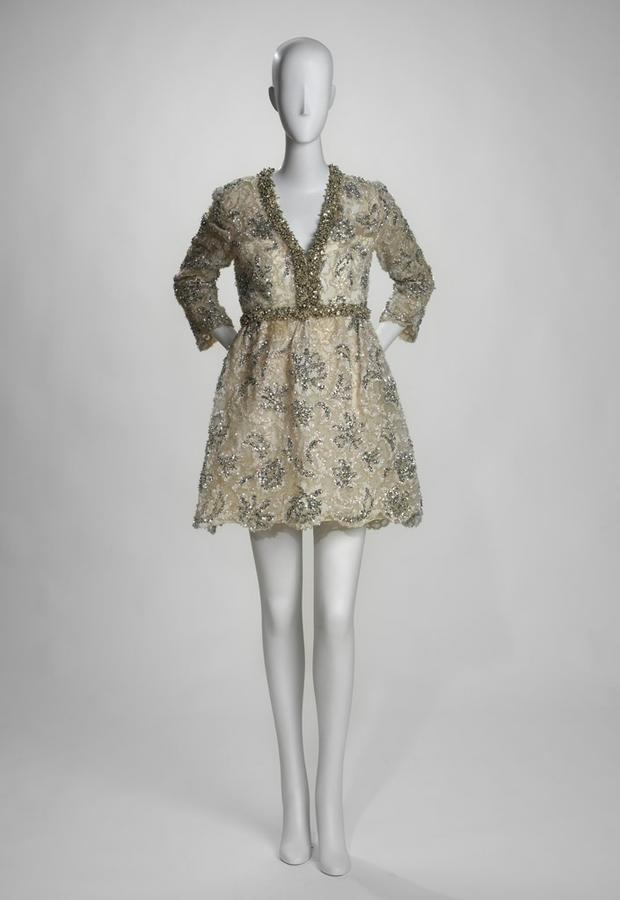
Oscar de la Renta's impact on the fashion industry was profound and multifaceted. His design philosophy centered on creating elegant, feminine, and sophisticated clothing that empowered women. He was renowned for his masterful use of luxurious fabrics, intricate embellishments, and vibrant colors, often drawing inspiration from his Dominican heritage and European influences. His ability to blend traditional couture techniques with modern sensibilities allowed him to consistently produce collections that were both timeless and contemporary.
He was a pioneer in the American fashion scene, helping to establish New York as a global fashion capital alongside Paris and Milan. His tenure at prestigious houses like Lanvin and Balmain, where he was the first Dominican to design haute couture for a French house, demonstrated his versatility and skill. De la Renta's business acumen led to the successful diversification of his brand into fragrances, accessories, and home goods, setting a precedent for luxury fashion houses to expand their reach. His influence extended to subsequent generations of designers, many of whom looked to his work for inspiration in craftsmanship, elegance, and commercial success.
7.2. Cultural impact
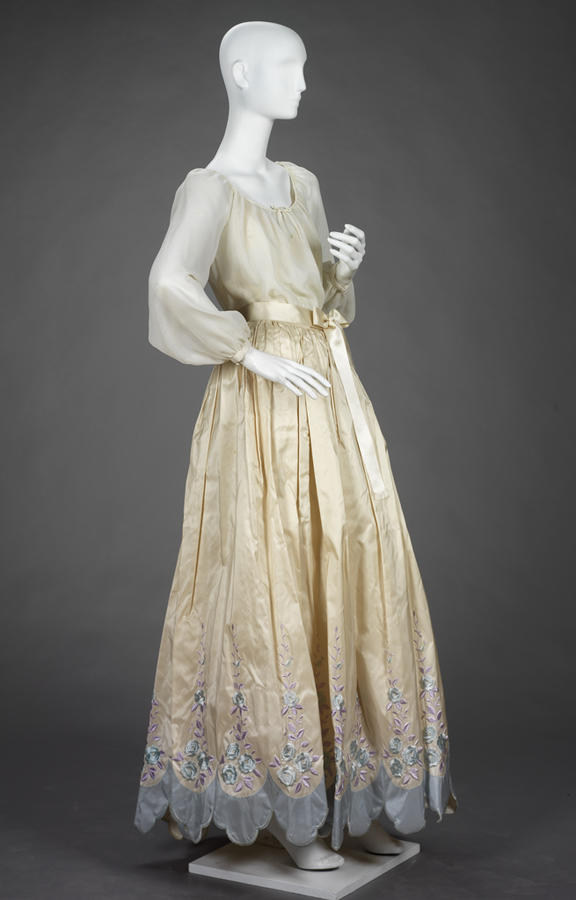
Beyond the runway, Oscar de la Renta had a significant cultural impact. He became a household name through his association with dressing some of the world's most prominent figures, including First Ladies like Jacqueline Kennedy Onassis and Laura Bush, as well as numerous celebrities and royalty. His designs became a symbol of American glamour and sophistication on the global stage.
As a Dominican-American designer, he served as a cultural ambassador for the Dominican Republic, often highlighting its beauty and culture in his work and through his philanthropic efforts. His founding of the Casa del Niño orphanage and his contributions to school construction in his home country underscored his deep commitment to social progress and human welfare. The global success of his eponymous brand, with its presence in retail stores and wholesale locations worldwide, cemented his legacy as one of the most influential and beloved designers of the 20th and early 21st centuries.
